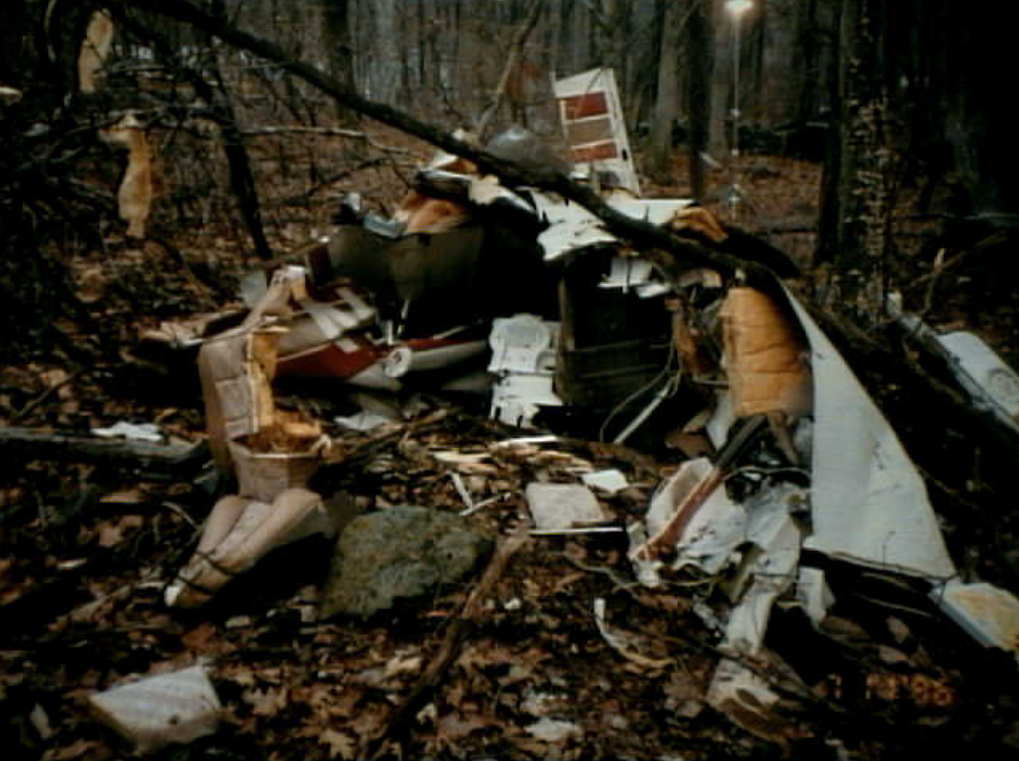
ASN Wikibase Occurrence # 37847
This information is added by users of ASN. Neither ASN nor the Flight Safety Foundation are responsible for the completeness or correctness of this information.
If you feel this information is incomplete or incorrect, you can submit corrected information.
| Date: | Wednesday 6 November 1996 |
| Time: | 18:35 |
| Type: |  Piper PA-34-200T Seneca II |
| Owner/operator: | Private |
| Registration: | N5671V |
| MSN: | 34-7770259 |
| Total airframe hrs: | 2828 hours |
| Engine model: | Continental TSIO-360-KB1 |
| Fatalities: | Fatalities: 2 / Occupants: 4 |
| Aircraft damage: | Destroyed |
| Category: | Accident |
| Location: | Lehman Township, PA -
 United States of America United States of America
|
| Phase: | En route |
| Nature: | Private |
| Departure airport: | Boston Logan International Airport, MA (BOS) |
| North Central West Virginia Airport, WV (CKB) | |
| Investigating agency: | NTSB |
| Confidence Rating: |
On November 6, 1996, at 1835 eastern standard time, a Piper PA-34-200T, N5671V, was destroyed during an in-flight break-up over Lehman Township, Pennsylvania. The certificated private pilot and one passenger were seriously injured. Two passengers received fatal injures. Night visual meteorological conditions prevailed for the "mercy flight" that originated at Boston, Massachusetts, about 1701. An Instrument flight rules flight plan had been filed for the flight conducted under 14 CFR Part 91.
The airplane was 90 minutes into the flight, level at 10,000 feet mean sea level, on a southwest heading, when air traffic control lost radio and radar contact with the flight. ATC observed primary radar targets only continue in a northerly direction, followed by a northeasterly direction. The cockpit, right wing and engine were found impaled on a tree near the point where radar contact was lost. The left wing and engine were within 200 feet east of the right wing. Debris was scattered northeast of the main wreckage for about 10,500 feet. Examination of the wreckage revealed that the fiberglass nose assembly had failed due to an undetermined reason. Airworthiness directives had been complied with that applied to the forward baggage compartment door.
Probable Cause: The failure of the forward fuselage nose assembly for an undetermined reason, which resulted in an in-flight breakup of the airplane.
Accident investigation:
 |
|
Sources:
NTSB: https://www.ntsb.gov/ntsb/brief.asp?ev_id=20001208X07101 (LINK DOES NOT WORK)
https://app.ntsb.gov/pdfgenerator/ReportGeneratorFile.ashx?EventID=20001208X07101&AKey=1&RType=Summary&IType=FA
Images:


Photos: NTSB
Revision history:
| Date/time | Contributor | Updates |
|---|---|---|
| 24-Oct-2008 10:30 | ASN archive | Added |
| 21-Dec-2016 19:23 | ASN Update Bot | Updated [Time, Damage, Category, Investigating agency] |
| 30-Jul-2020 06:42 | Anon. | Updated [Source] |
| 18-Oct-2022 18:14 | Captain Adam | Updated [Aircraft type, Operator, Phase, Nature, Departure airport, Destination airport, Narrative, Accident report, Photo] |
| 18-Oct-2022 18:14 | Captain Adam | Updated [Photo] |
Corrections or additions? ... Edit this accident description
The Aviation Safety Network is an exclusive service provided by:


 ©2024 Flight Safety Foundation
©2024 Flight Safety Foundation